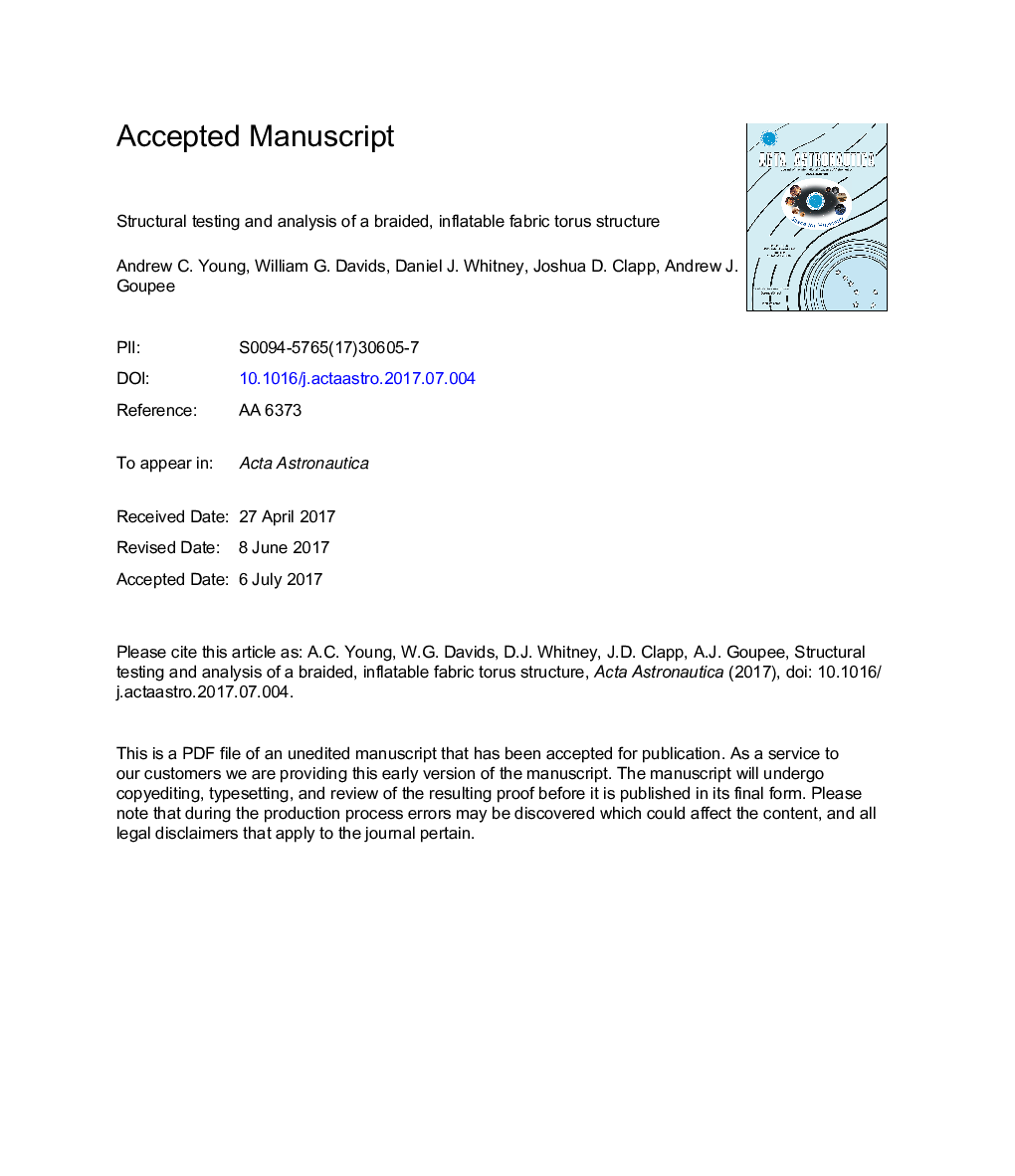| Article ID | Journal | Published Year | Pages | File Type |
|---|---|---|---|---|
| 5472261 | Acta Astronautica | 2017 | 57 Pages |
Abstract
Inflatable structural members have military, disaster relief, aerospace and other important applications as they possess low mass, can be stored in a relatively small volume and have significant load-carrying capacity once pressurized. Of particular interest to the present research is the Hypersonic Inflatable Aerodynamic Decelerator (HIAD) structure under development by NASA. In order to make predictions about the structural response of the HIAD system, it is necessary to understand the response of individual inflatable tori composing the HIAD structure. These inflatable members present unique challenges to structural testing and modeling due to their internal inflation pressure and relative compliance. Structural testing was performed on a braided, inflatable, toroidal structural member with axial reinforcing cords. The internal inflation pressure, magnitude of enforced displacement and loading methodology were varied. In-plane and out-of-plane experimental results were compared to model predictions using a three dimensional, corotational, flexibility-based fiber-beam finite element model including geometric and material nonlinearities, as well as the effects of inflation pressure. It was found that in order to approximate the load-deformation response observed in experimentation it is necessary to carefully control the test and model boundary conditions and loading scheme.
Related Topics
Physical Sciences and Engineering
Engineering
Aerospace Engineering
Authors
Andrew C. Young, William G. Davids, Daniel J. Whitney, Joshua D. Clapp, Andrew J. Goupee,
